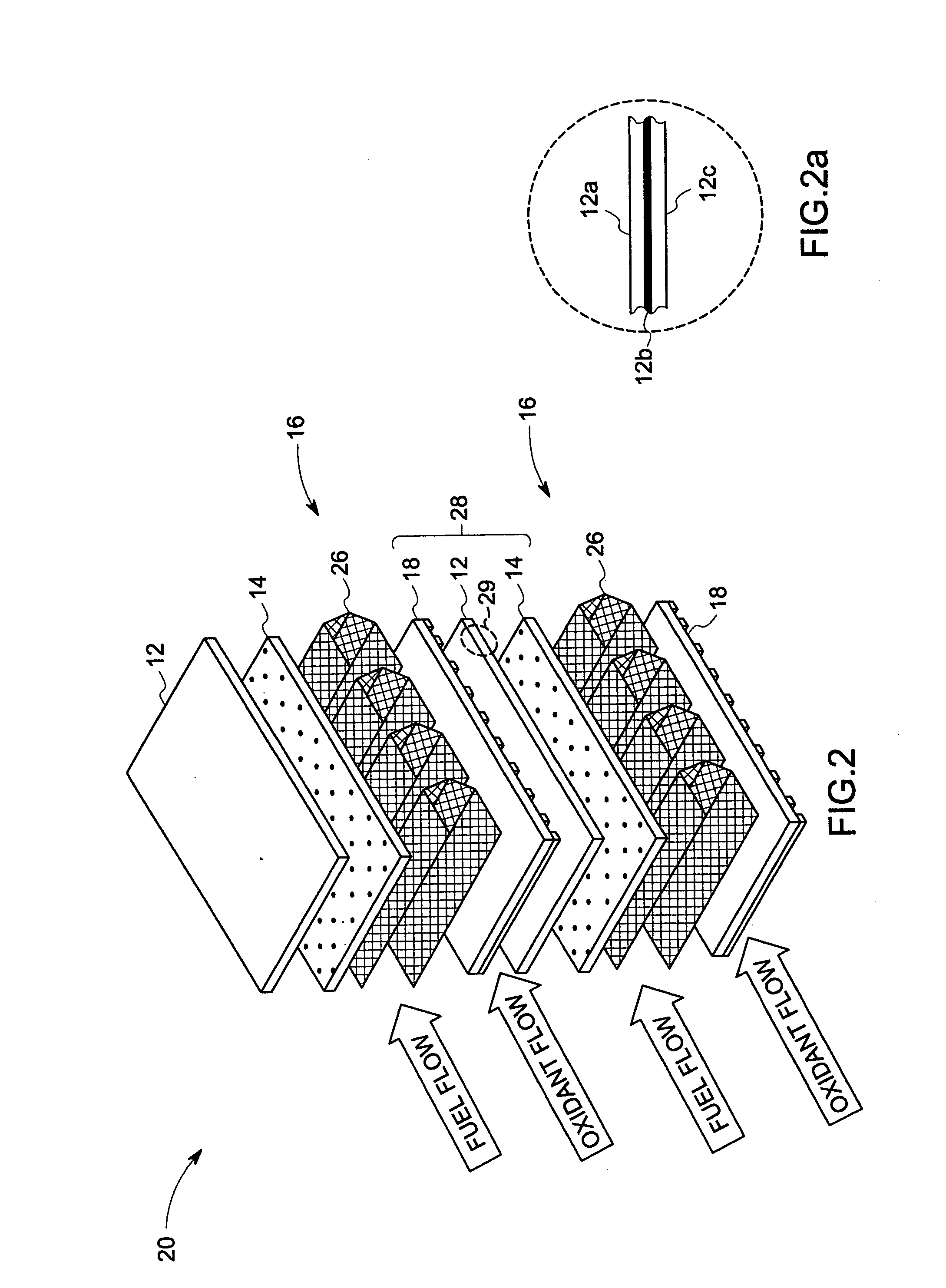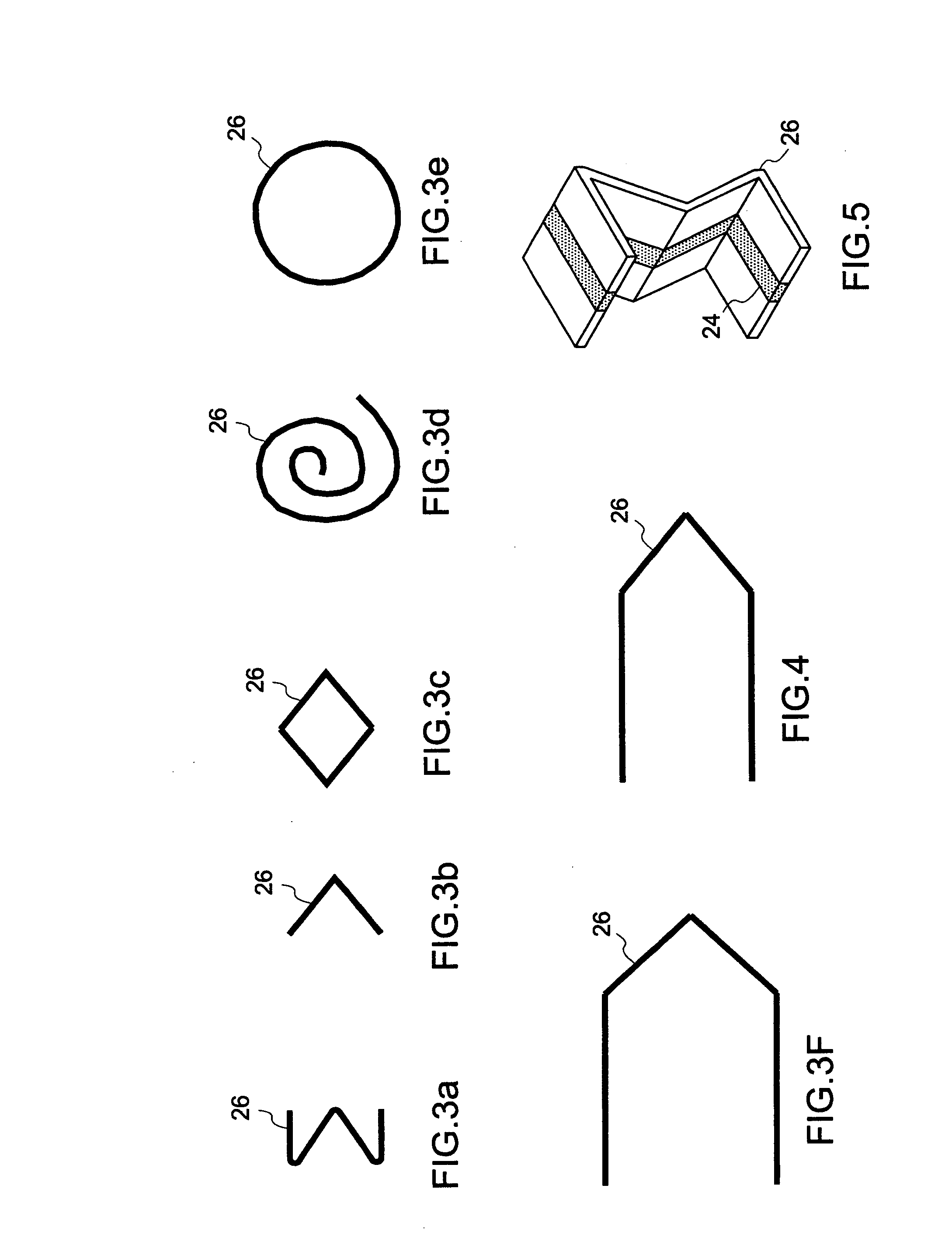Compliant fuel cell system
a fuel cell and compliant technology, applied in the field of fuel cells, can solve the problems of reducing the efficiency of the fuel cell, affecting the seal separating the oxidant and the fuel path, and the fuel cell is subject to mechanical and thermal loads
- Summary
- Abstract
- Description
- Claims
- Application Information
AI Technical Summary
Benefits of technology
Problems solved by technology
Method used
Image
Examples
Embodiment Construction
[0016] Fuel cells, such as solid oxide fuel cells, have demonstrated a potential for high efficiency and low pollution in power generation. A fuel cell is an energy conversion device that produces electricity, by electrochemically combining a fuel and an oxidant across an ionic conducting layer. Fuel cells may have planar or tubular configurations. Fuel cells may be stacked together either in series or in parallel to construct the fuel cell architecture, capable of producing a resultant electrical energy output. In an exemplary embodiment as illustrated in FIG. 1, fuel cell 10 comprises a cell 12 comprising a first electrode, a second electrode and an electrolyte interposed therebetween. The fuel cell 10 further comprises a first electrode interconnect 14, a separator plate 18, which separator plate is configured to have a second electrode interconnect incorporated, and a compliant structure 16 disposed between the first electrode interconnect 14 and the separator plate 18. In opera...
PUM
| Property | Measurement | Unit |
|---|---|---|
| temperatures | aaaaa | aaaaa |
| thickness | aaaaa | aaaaa |
| thickness | aaaaa | aaaaa |
Abstract
Description
Claims
Application Information
 Login to View More
Login to View More - R&D
- Intellectual Property
- Life Sciences
- Materials
- Tech Scout
- Unparalleled Data Quality
- Higher Quality Content
- 60% Fewer Hallucinations
Browse by: Latest US Patents, China's latest patents, Technical Efficacy Thesaurus, Application Domain, Technology Topic, Popular Technical Reports.
© 2025 PatSnap. All rights reserved.Legal|Privacy policy|Modern Slavery Act Transparency Statement|Sitemap|About US| Contact US: help@patsnap.com



